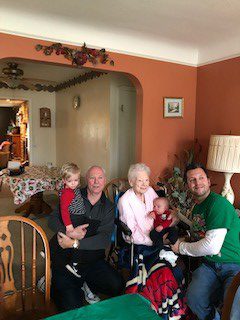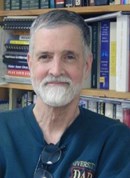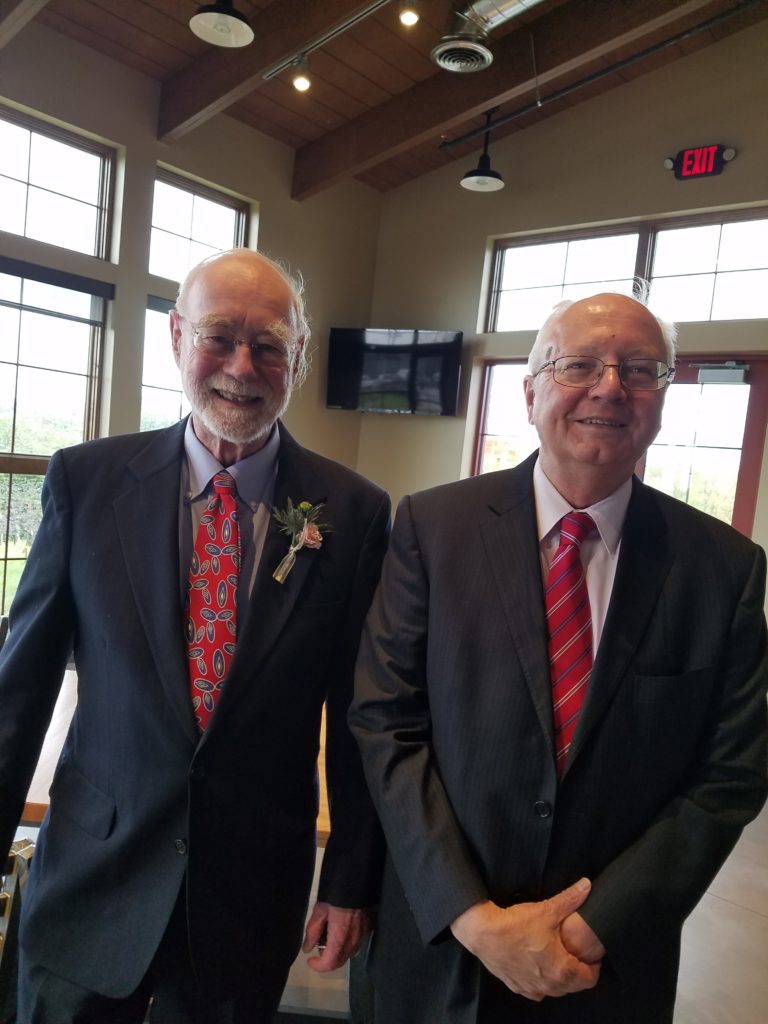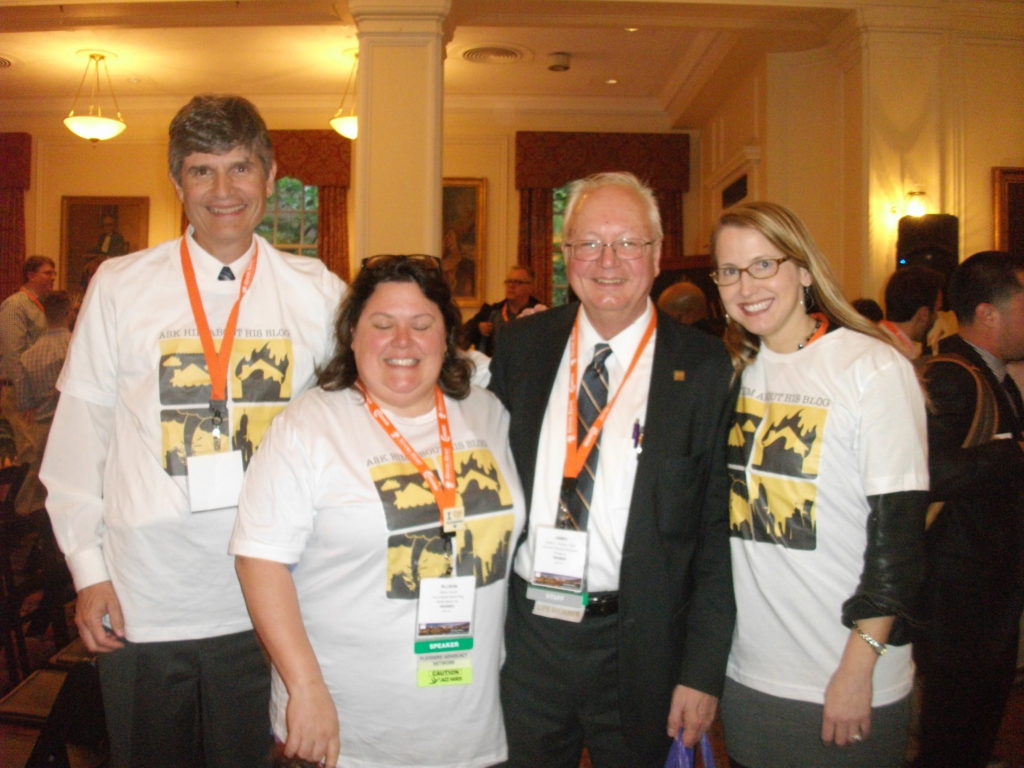Gratitude on Parade #1
Okay, call me a copycat. If an idea is good enough, why not copy it proudly? On New Year’s Day, I read in a Chicago Tribune column by Heidi Stevens about a woman, Jen Kramer, who began a daily effort on Facebook a year ago as #yearoflove. Every day she posted about someone who meant something.
It occurred to me that we all have many people for whom we should be grateful, and we may not always do a good job of saying so. I thought hard about whether I could sustain a daily effort for a year as Kramer did, and then I thought, you’re a professional writer. How hard can one paragraph a day be? So I decided to take the plunge, starting that day, with #gratitudeonparade. Friends will begin learning why I am grateful and to whom. Some of it may be random, and some may be well planned. It’s a daring commitment, so I’ll see how it goes. But I have a feeling I may learn much about myself by trying.
Once a week, I will compile these short entries into a composite blog post to expand the audience. So, if you miss the daily feed on Facebook, feel free to visit www.jimschwab.com/Hablarbooks.
Posted on Facebook 1/1/2019
GRATITUDE ON PARADE
#gratitudeonparade
Gratitude should start in the most logical places. My mother, Hazel Schwab, who has outlived almost all her peers, would probably prefer that I not state an age on Facebook (she does not own a computer and has never used the Internet), but I want to state that she has shown me and three siblings the power of determination and the will to live and resilience many times over. She and my father early on made sure that we were in a good school district and encouraged education, even though they finished high school but never attended college. When I moved to Iowa, later married in Nebraska, and ended up in Chicago, I knew she would rather I had stayed in Cleveland. Reluctantly at first, however, she learned pride that I had spread my wings and soared professionally, even if she never fully understood exactly what I did–it was a bit esoteric by her standards, not easy to explain to her friends. (Even my wife wondered what an urban planner was when she first met me.) But she was tough of mind, and if we did not always agree on some things, we learned to disagree. But by now I have watched her survive and surmount so many challenges, it is hard to escape the conclusion that I owe some of my own dogged persistence to my mother. Thanks, Mom. You get the first tribute.

Posted on Facebook 1/1/2019
GRATITUDE ON PARADE
#gratitudeonparade
I suffered a disappointing discovery yesterday while composing my blog post. Long-time friend and former University of Iowa professor Michael F. Sheehan had died on May 30. I was mentioning his role in my career and searched for an appropriate link only to find a May 30 obituary. He was 72. A physically fit ex-Marine, I expected he would live longer, and the obit does not say how he died. I had not talked to him in a long while, but I still felt a loss. He was the pivot point in a vital decision that changed my life.
In late 1981, I was pursuing options for graduate school after two and a half years as the executive director of the Iowa Public Interest Research Group. Mike was a fierce advocate for the environment and knew me in that role. At lunch one day, I mentioned that I had just explored a Ph.D. program in the University of Iowa’s political science program, but had a disappointing conversation in which I had told the head of the department’s MPA program that I had lobbied in Des Moines in my Iowa PIRG role. He responded, “That wouldn’t be relevant here. If you had done a study of lobbying . . . .”
Mike reacted to this curt dismissal of real-life experience by simply asking, “Why don’t you apply to our urban planning program? We love people like you.” I did, and the rest is history, so to speak.
But it was more than that turning point. In his classes, Mike had high expectations for me and tolerated no flimsy excuses if I fell short. That was of a piece with his approach to life. He never hesitated to be a thorn in the side of polluters, the powerful, and the pompous. By the time I completed my degree, he was entering law school so that, as they say, he could “sue the bastards.” The advocate in his soul triumphed over the academic. Several years later, still in his needling mode but living in Oregon (where he remained), he joked that I was the best of a “mediocre lot” in my class. But this time, I was ready with a verbal ambush. My first book was out, and the reviews were appearing.
“Do mediocrities get their books reviewed in the New York Times?” I asked.
I could hear the chuckle over my one-upmanship. “You know, I’ve been bragging on you, Schwab,” he replied. It was like that with him, and it was always fun. Today’s tribute of gratitude may be too late for Michael Sheehan to read, but it is owed nonetheless. Here’s to the man who guided me into a career I have never regretted.

Posted on Facebook 1/2/2019
GRATITUDE ON PARADE
#gratitudeonparade
Yesterday, I offered tribute to Michael Sheehan, who persuaded me to try a career in urban planning. Today’s honoree gets to enjoy reading his tribute, fortunately. University of Iowa Professor John W. Fuller followed closely on Mike’s heels by quickly hiring me as a research assistant as soon as I was accepted into the program. I worked with him year-round for more than three years in the Institute for Urban and Regional Research and in the Legislative Extended Assistance Program, neither of which remains extant. The latter produced policy studies each year from four-year colleges and universities for the Iowa legislature at the request of its leaders. In my final year of graduate study in both Urban and Regional Planning and Journalism, John sold those leaders on my combination of writing and analytical skills to produce what he promised would be a plain-English assessment of the farm credit crisis, arguably the biggest issue facing the state as the 1985 legislative session commenced. John knew I could also draw upon research I was doing for my master’s project in journalism, an oral history of the farm credit crisis, to humanize the report’s conclusions.
As the due date in February 1985 approached, I was so grateful for this remarkable opportunity that I pulled an all-nighter in the LEAG office at the Oakdale Campus in order to ensure that the 100-plus-page report could be printed and delivered to Des Moines on time. As for that master’s project, it eventually became a book—Raising Less Corn and More Hell—published by the University of Illinois Press in 1988. Just a few months later, he and Kathy regretted missing our wedding in Omaha because they were on an academic exchange at Universidad de los Andes in Venezuela, but later that summer they returned with a beautiful Andean marital blanket as a wedding gift.
But John was never done manufacturing opportunities. Two decades later, when the 2008 floods were swamping Iowa and the School of Urban and Regional Planning was seeking expertise to add some hazards training to the curriculum, it was John who spoke up and asked, “Why don’t we bring back Jim Schwab?” That was the beginning of an ongoing relationship that has allowed me to teach and mentor my own crop of students ever since then as an adjunct assistant professor, teaching an annual course on hazard mitigation and disaster recovery.
John and Kathy have offered their own home as a place to stay when I visit. This is not at all unusual. He and his wife, Kathy, have hosted and housed innumerable international visitors, students, and others for decades. They are among the most generous people I know. John is a profile in professional dedication and has been a powerful asset for the students he has taught for nearly four decades.

Posted on Facebook 1/3/2019
GRATITUDE ON PARADE
#gratitudeonparade
Last night, I failed to post my daily installment of Gratitude on Parade, but I will make up for it. My excuse is that a groin muscle strain flared up late in the day, making it uncomfortable to continue working, so I sat back and watched television instead. Jean was watching the Joy Reed town hall on MSNBC with Nancy Pelosi, so I joined her.
When such days occur for me, and they are rare, I think about people with much more serious illnesses or injuries, and how they demonstrate personal resilience. They all have lessons to teach the rest of us—to be grateful for their examples, and for our own generally good health. One of those people, who I know thinks the gratitude should run the other way because I have filled in for her as acting chair of the APA Hazard Mitigation and Disaster Recovery Planning Division for much of the year, is Allison Hardin. Allison, a planner for the city of Myrtle Beach, SC, was doing fine as the real chair through April, had the misfortune of nearly being killed in a serious auto accident in which a young man drove into the sports car Allison’s son Robert was driving, and in which she was a passenger. A long string of examinations, surgeries, and treatments has followed for both, and Allison has shown great courage in moving from wheelchair to walker to her own two feet while nurturing her son back to health as well, with the help of her husband. Through it all, she has coped with mountains of delayed e-mail on her job, tough decisions about her own future, and the usual major insurance and medical issues that accompany such a calamity. Allison has occasionally reminded me that she is aware that, while we planners talk about community resilience, it really all starts at a personal level.
I remain happy to be her “acting chair” of HMDR because, frankly, I have never faced a predicament like hers, hope I never do, and have no clear idea how well I would handle it But at least I have an example if I ever need one.

Posted on Facebook 1/5/2019
